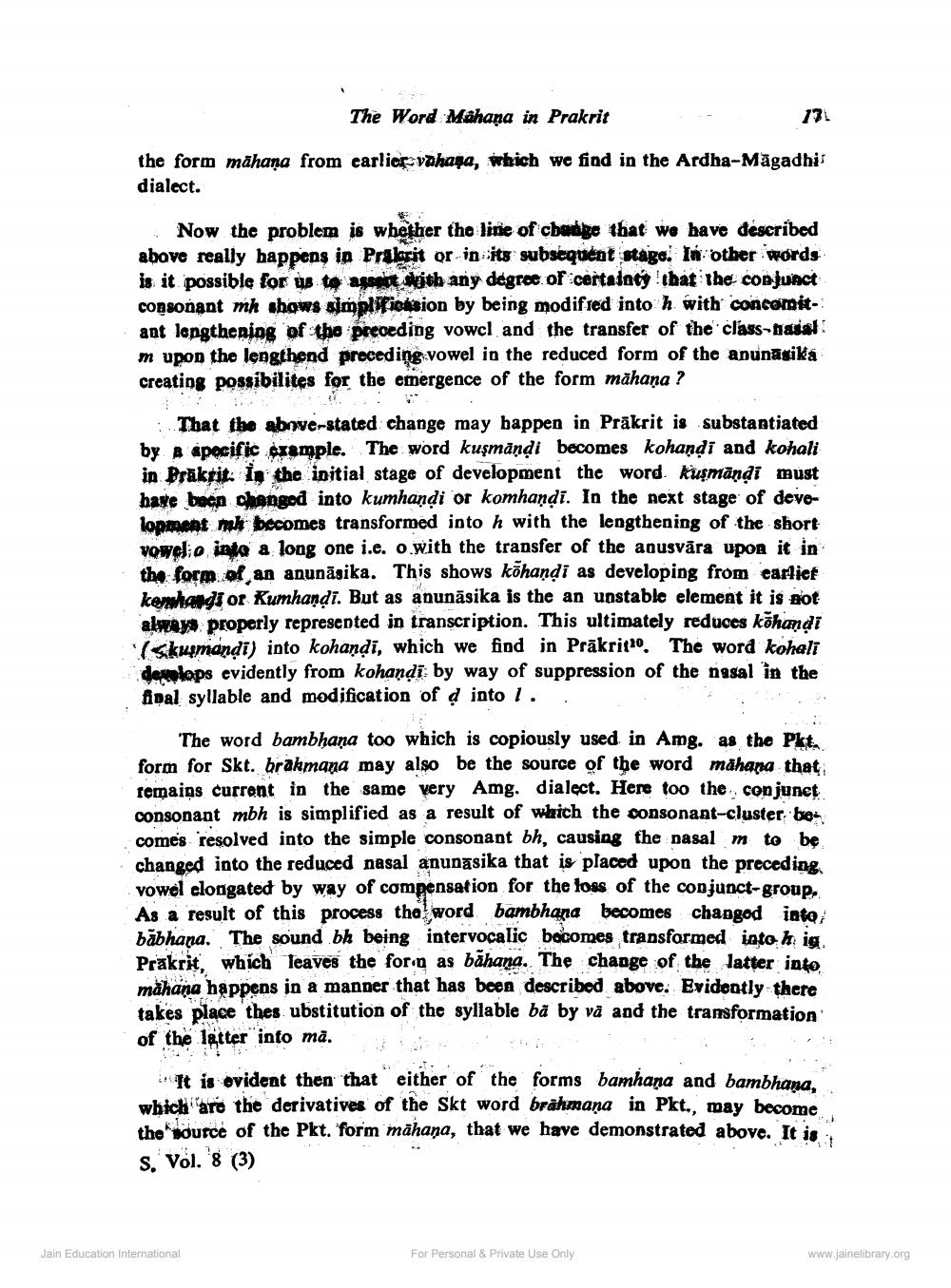________________
The Word Mahaņa in Prakrit
the form mähana from earlier vahaga, which we find in the Ardha-Māgadhi dialect.
Now the problem is whether the line of change that we have described above really happens in Prakrit or in its subsequent stage. In other words is it possible for us to agamint kith any degree of certainty that the conjunct consonant mh shows simpliosion by being modifred into h with concernitaat lengthening of the preceding vowel and the transfer of the class-basal m upon the lengthend preceding vowel in the reduced form of the anunsika creating possibilites for the emergence of the form mähana ?
That the above-stated change may bappen in Präkrit is substantiated by a specific example. The word kuşmāņdi becomes kohandi and kohali in Brüktit: in the initial stage of development the word. kuşmandi must have been changed into kumhandi or komhandi. In the next stage of development mal becomes transformed into h with the lengthening of the short vond o inka a long one i.e. o.with the transfer of the anusvāra upon it in the form of an anunāsika. This shows kõhandi as developing from earlief komhandi or Kumhandi. But as anunāsika is the an unstable element it is aot always properly represented in transcription. This ultimately reduces kõhandi (sku mandi) into kohandi, which we find in Prākritto. The word kohali dowolops evidently from kohandi by way of suppression of the nasal in the fpal syllable and modification of d into 1. .
The word bambhaņa too which is copiously used in Amg. as the Pkt. form for Skt. brakmana may also be the source of the word mähana that fermaiņs current in the same very Amg. dialect. Here too the con junet consonant mbh is simplified as a result of which the consonant-cluster be
come's resolved into the simple consonant bh, causing the nasalm to be · changed into the reduced nasal anupasika that is placed upon the preceding
vowel elongated by way of compensation for the loss of the conjunct-group. As a result of this process the word bambhana becomes changod inte băbhana. The sound bh being intervocalic bocomes transformed into hig Prakrit, which leaves the foron as bāhana. The change of the latter into måhana happens in a manner that has been described above. Evidently there takes place thes ubstitution of the syllable ba by va and the transformation of the latter into ma.
ript is evident then that either of the forms bamhana and bambhana, which are the derivatives of the Skt word brahmana in Pkt., may become the source of the Pkt. form mähana, that we have demonstrated above. It is S. Vol. 8 (3)
Jain Education International
For Personal & Private Use Only
www.jainelibrary.org




